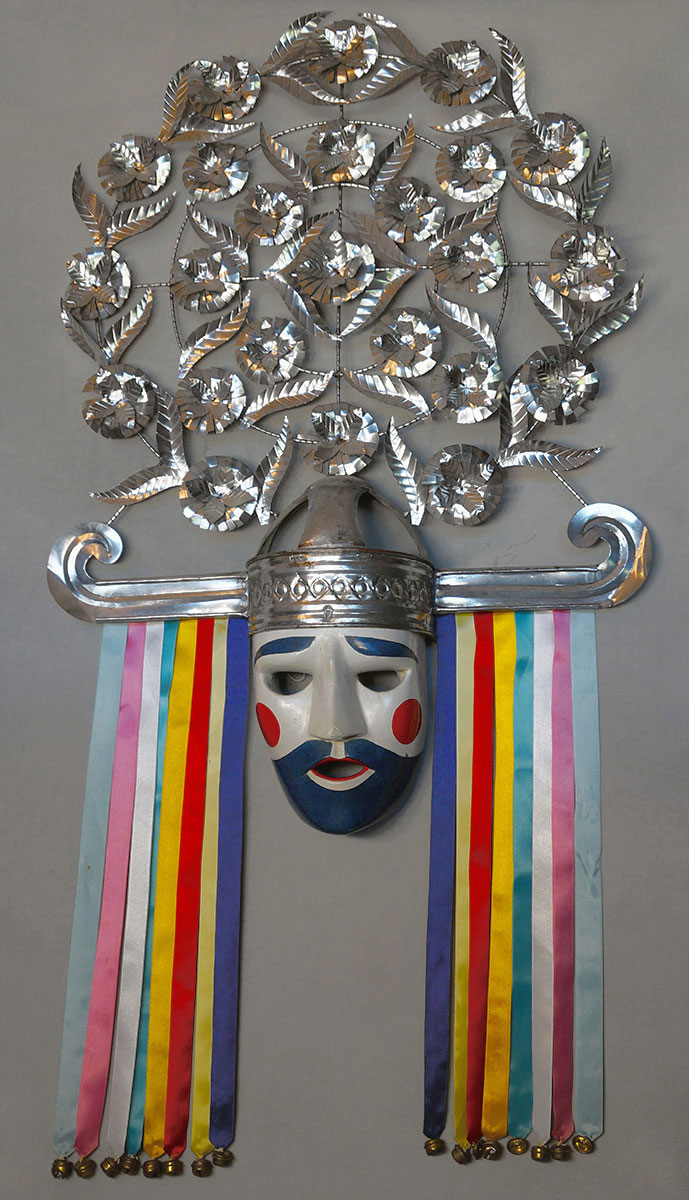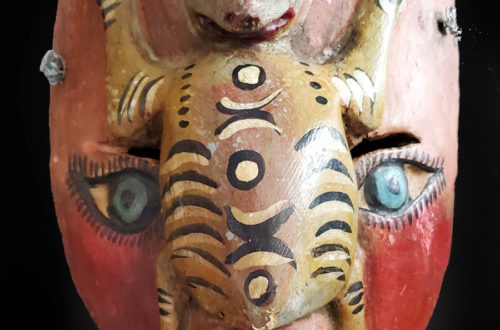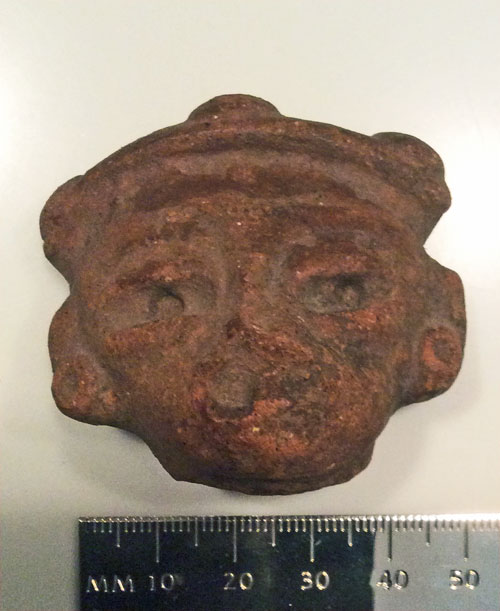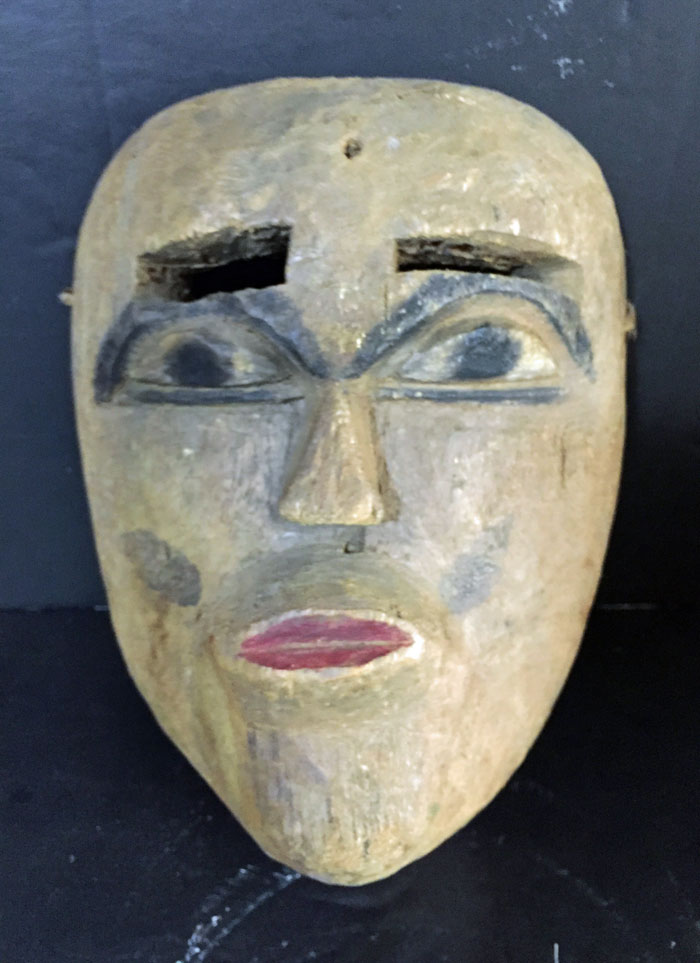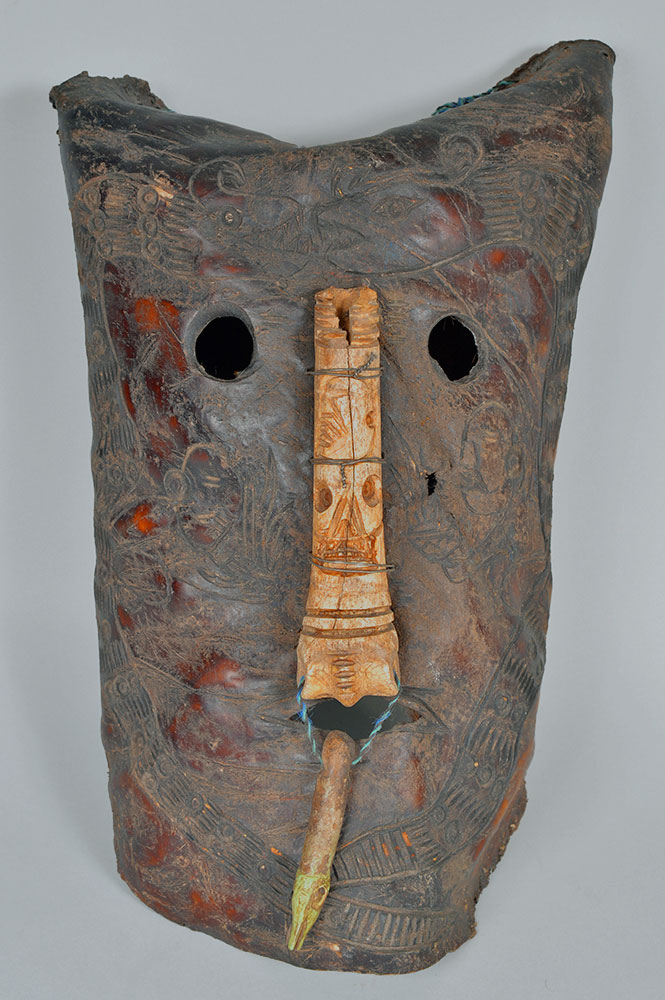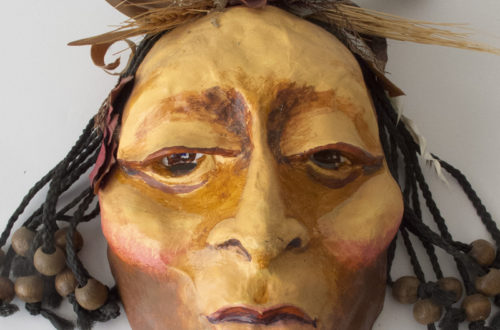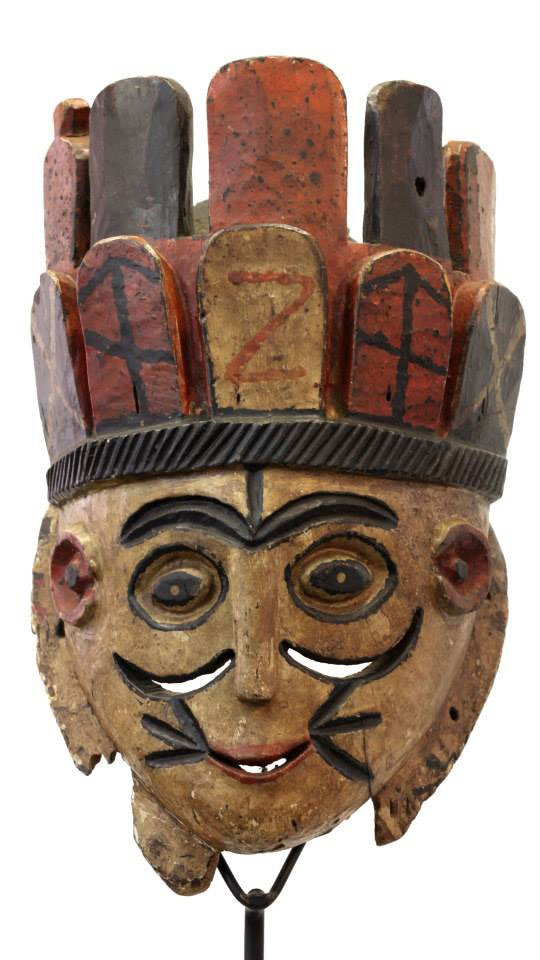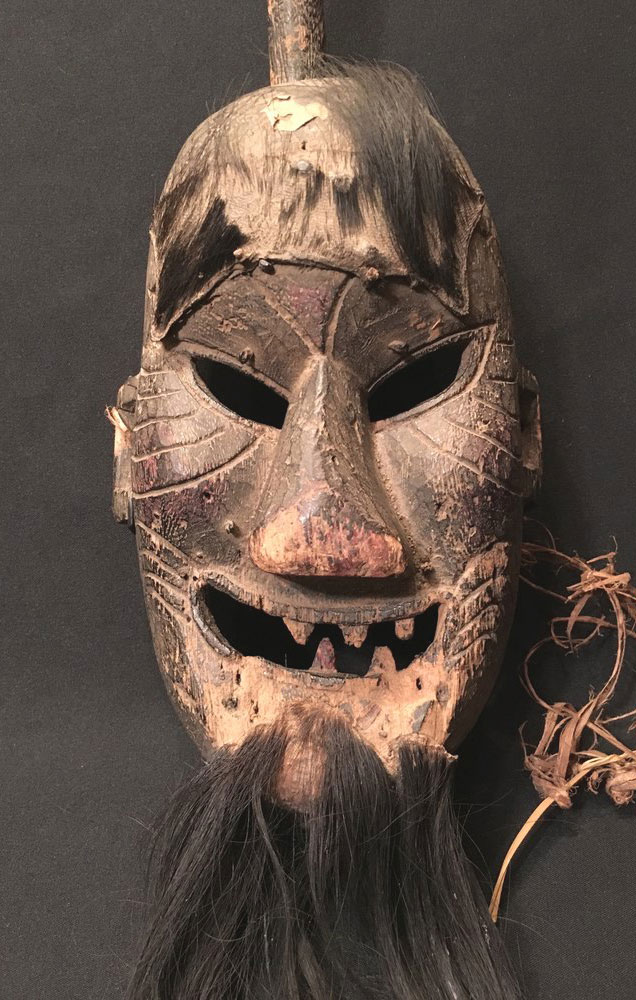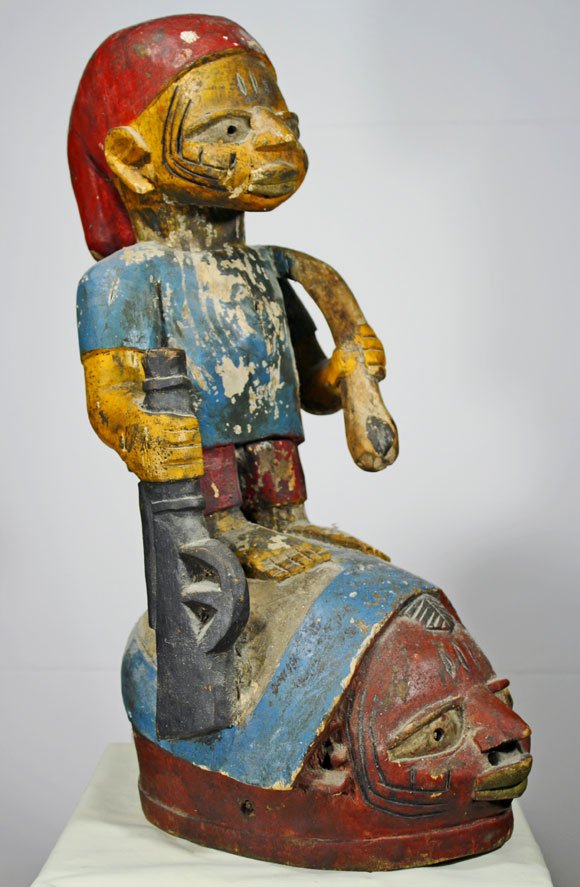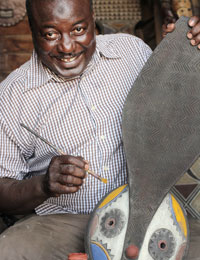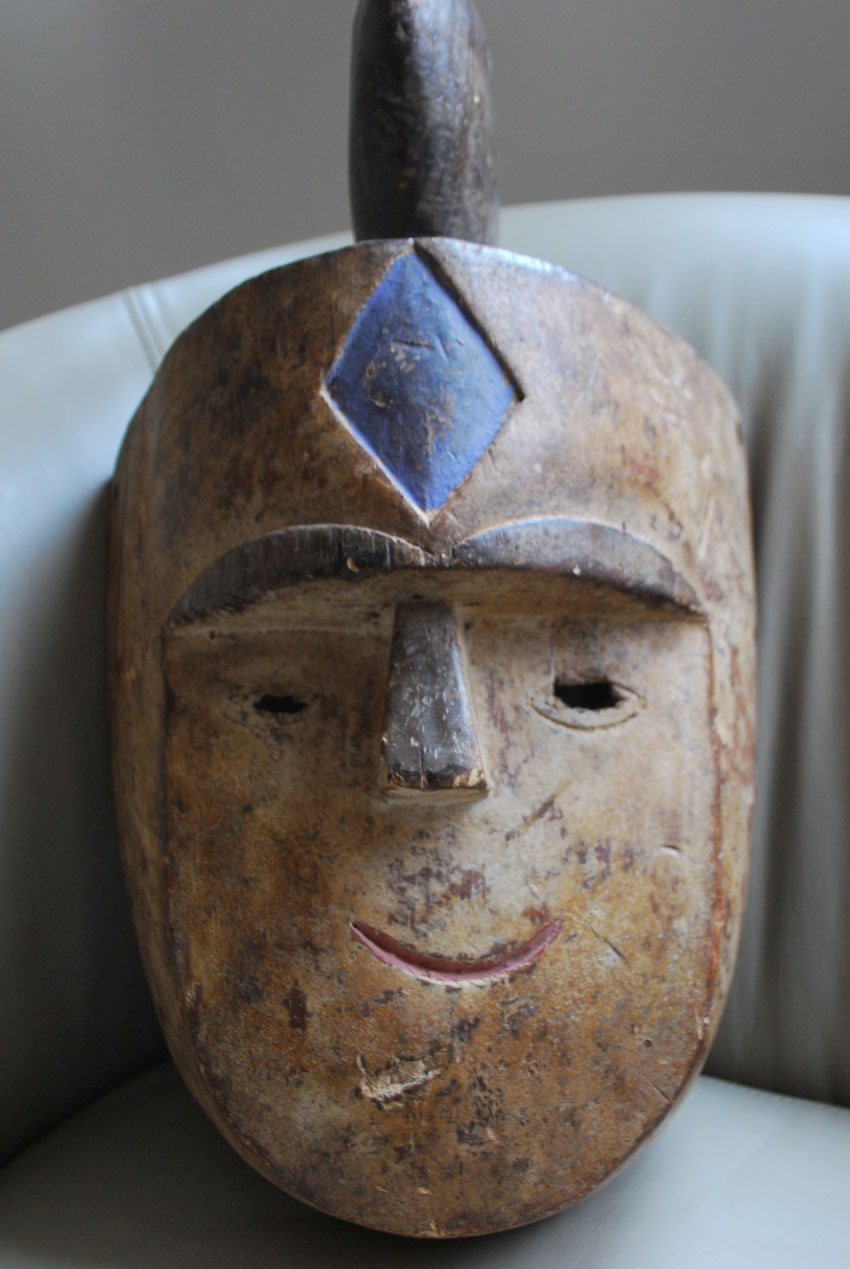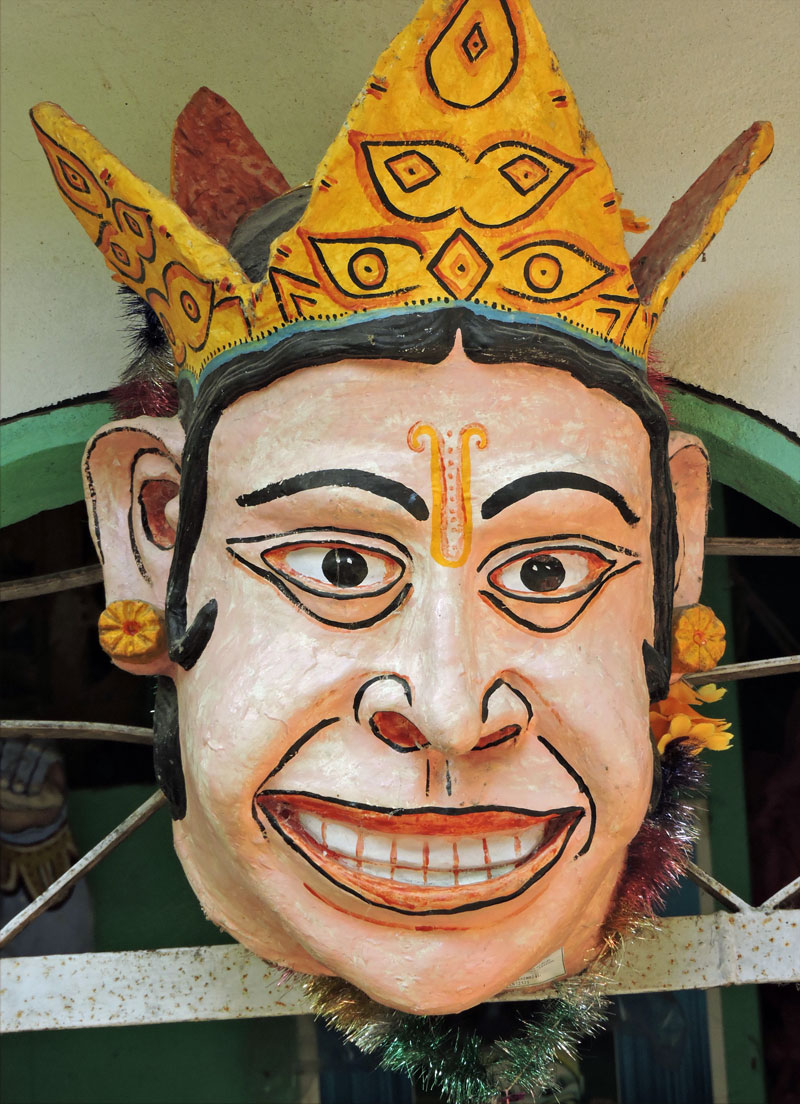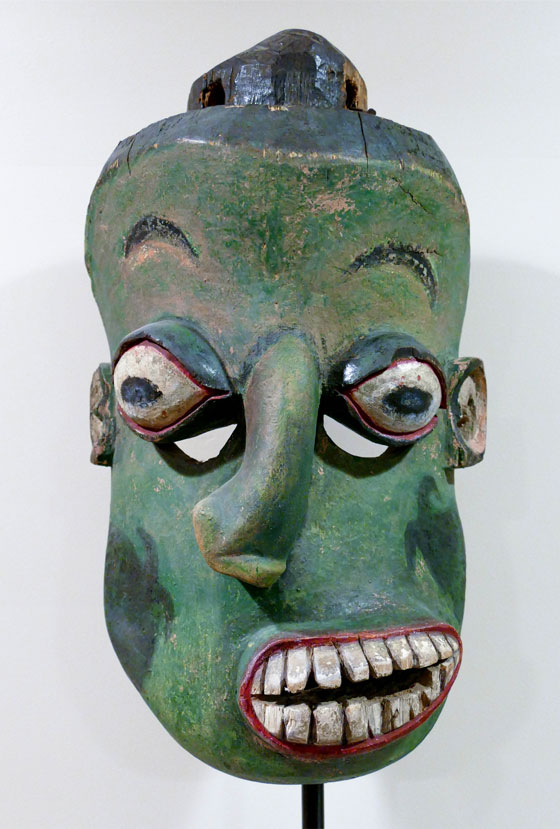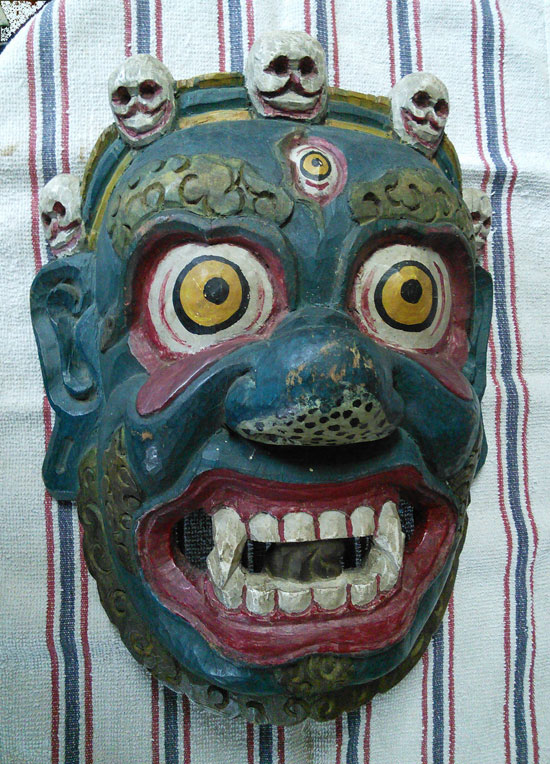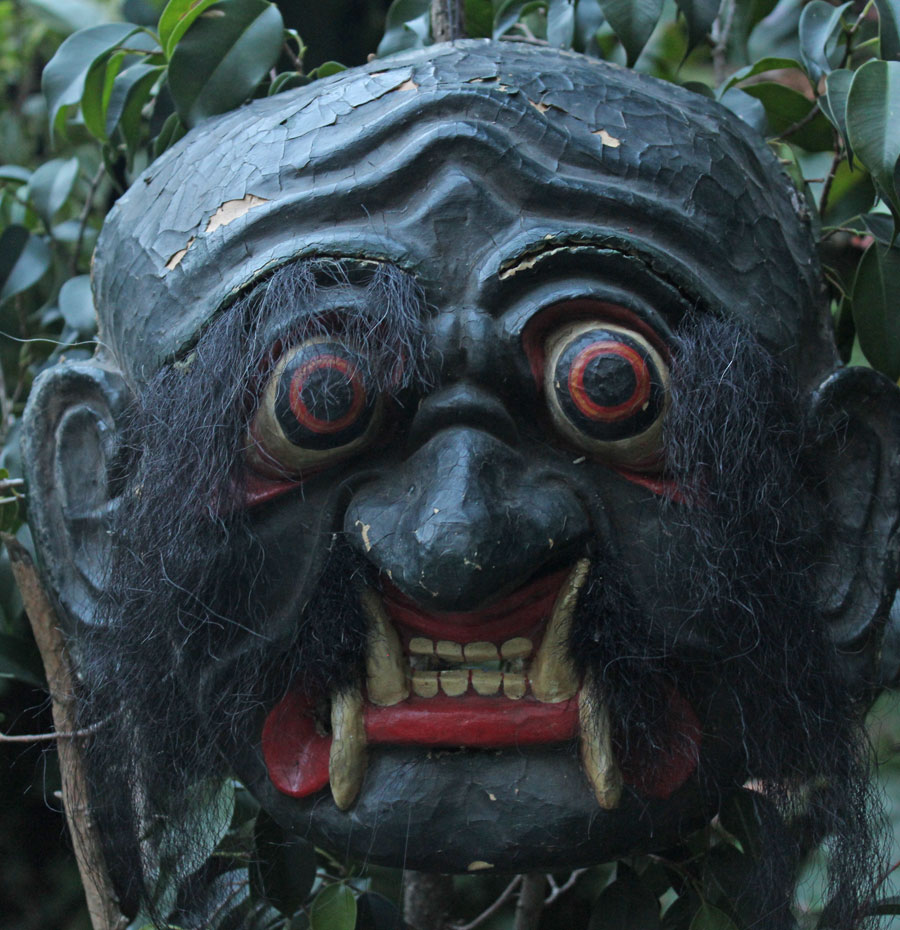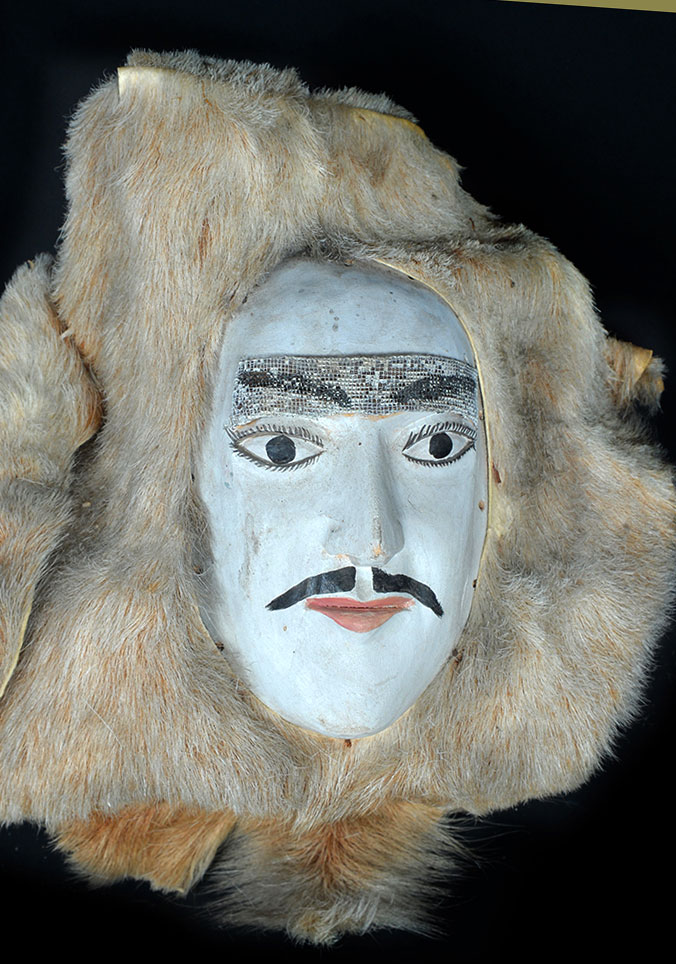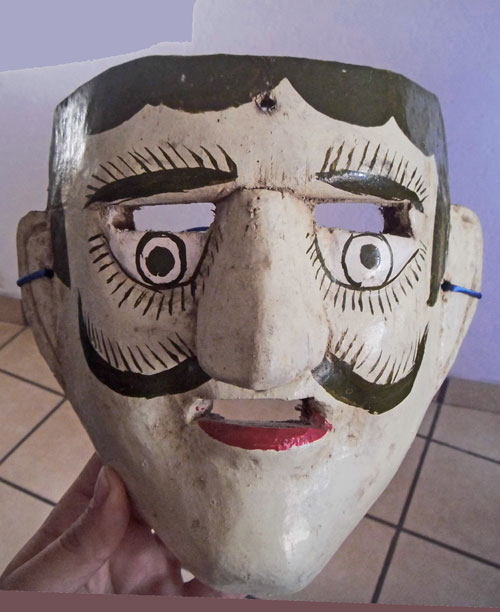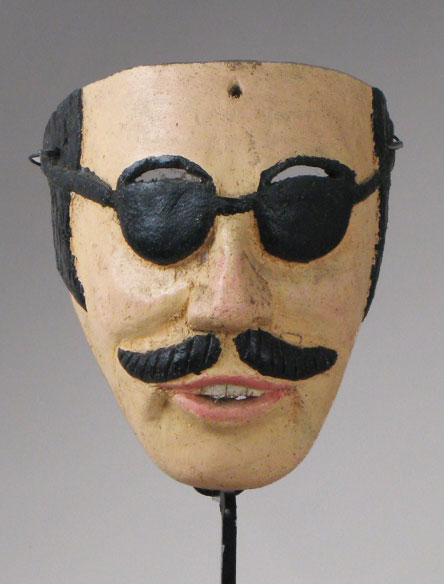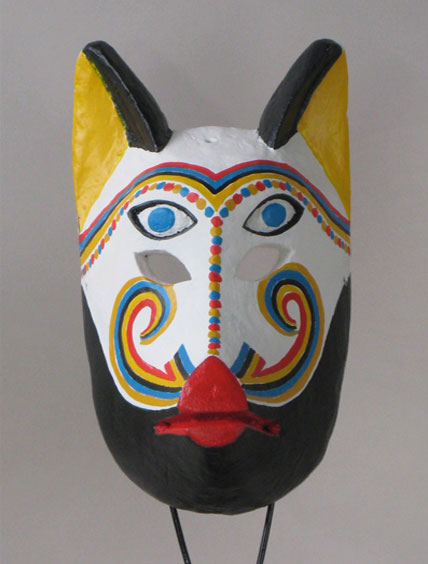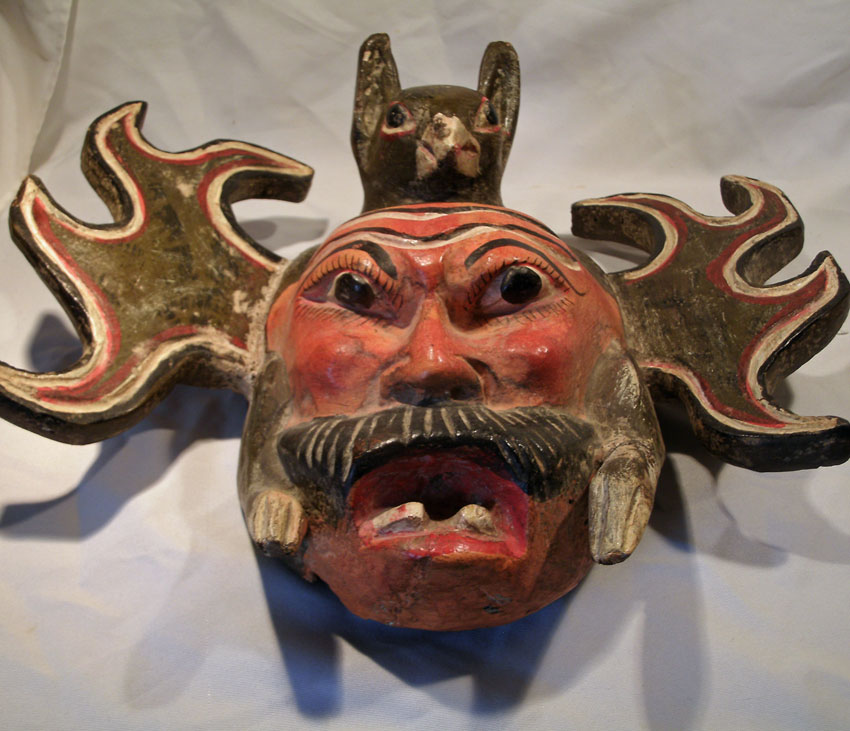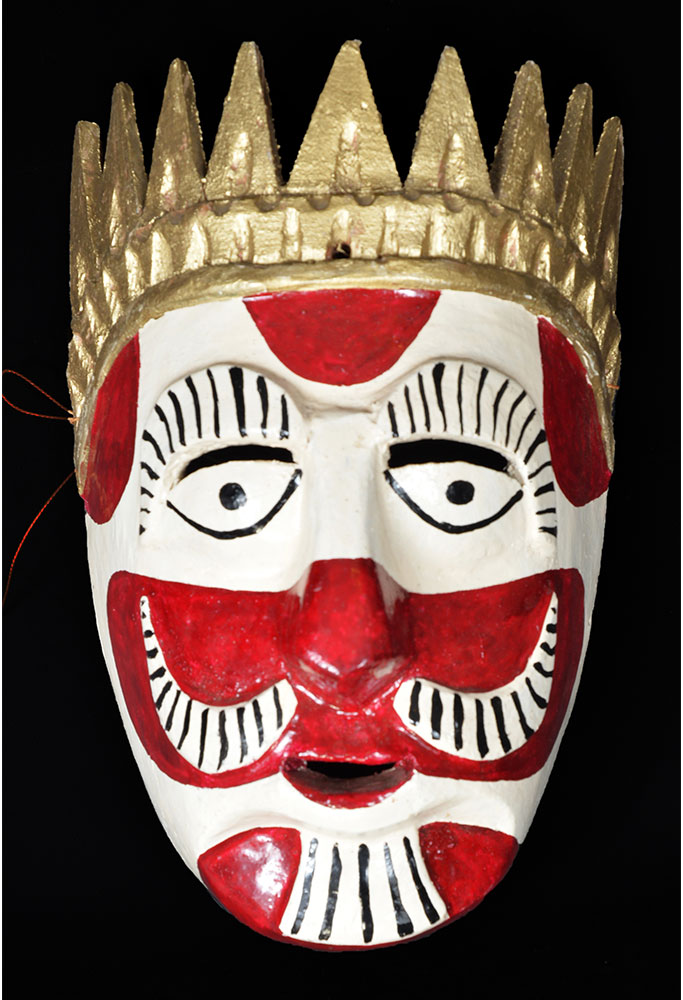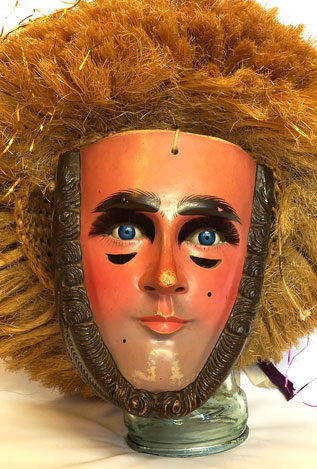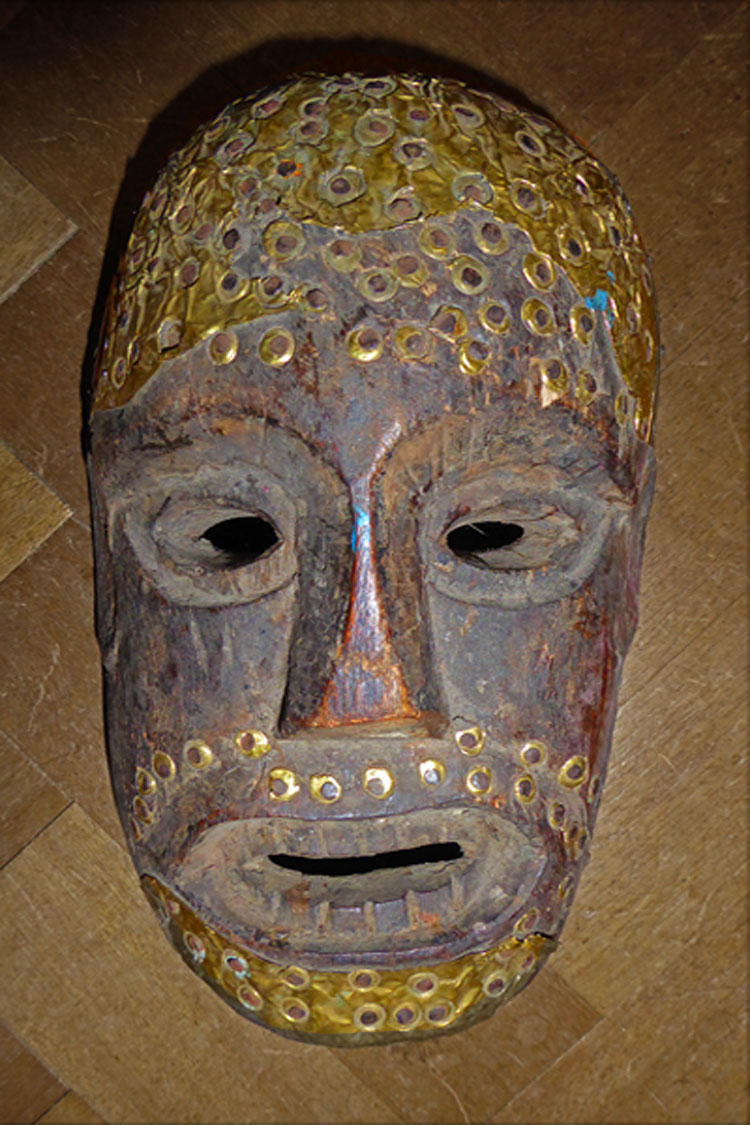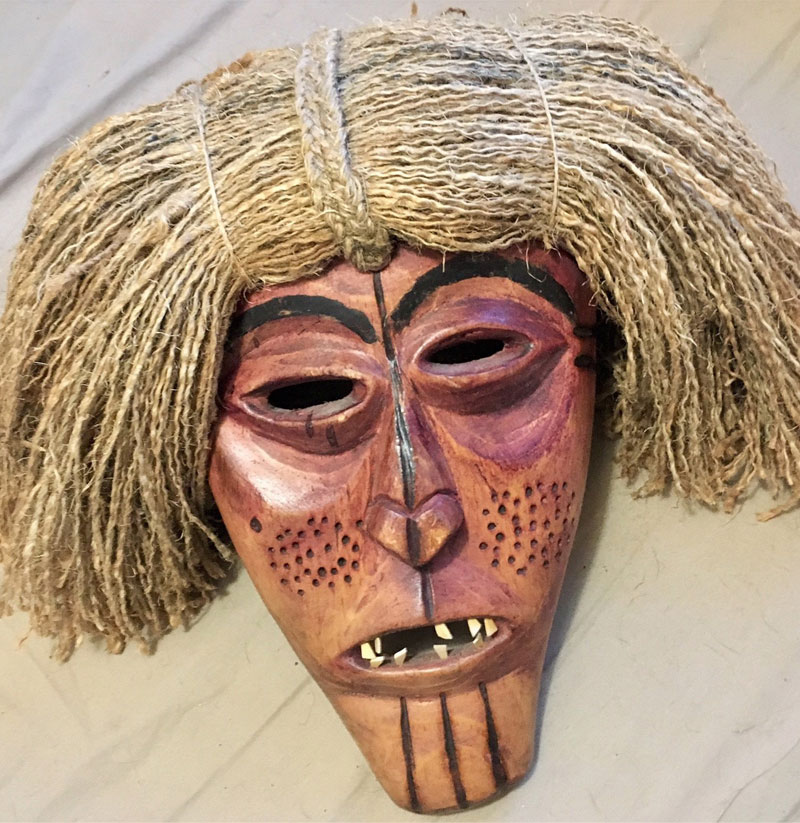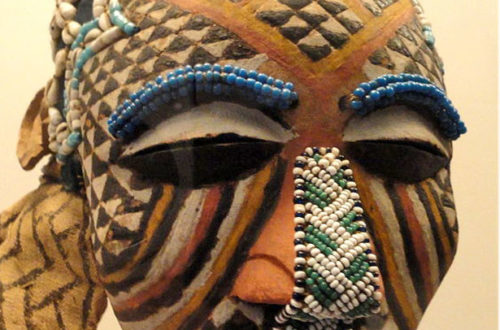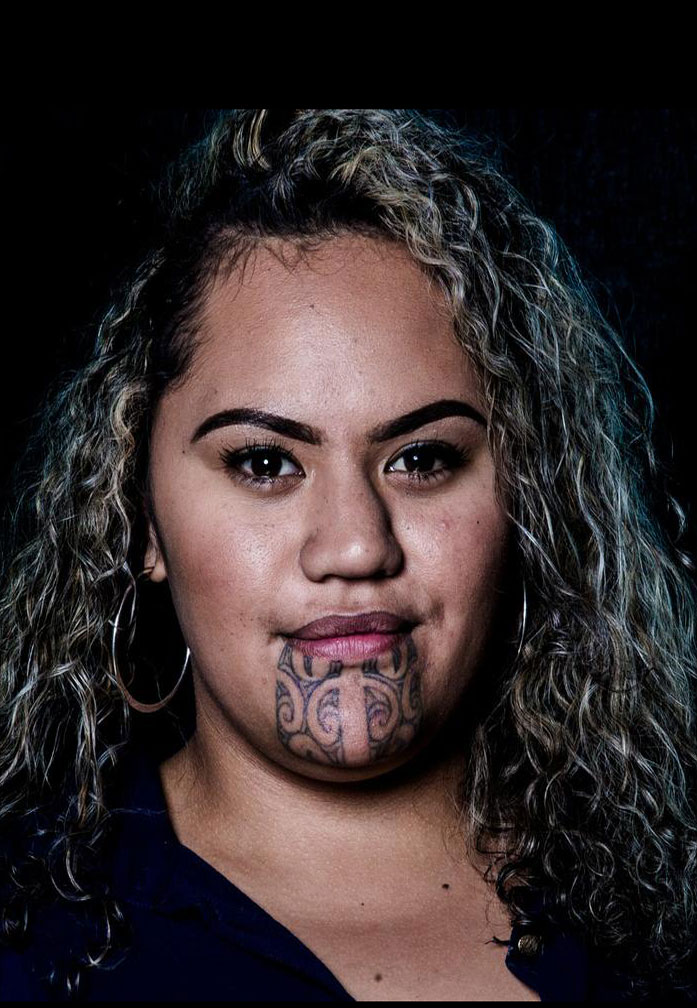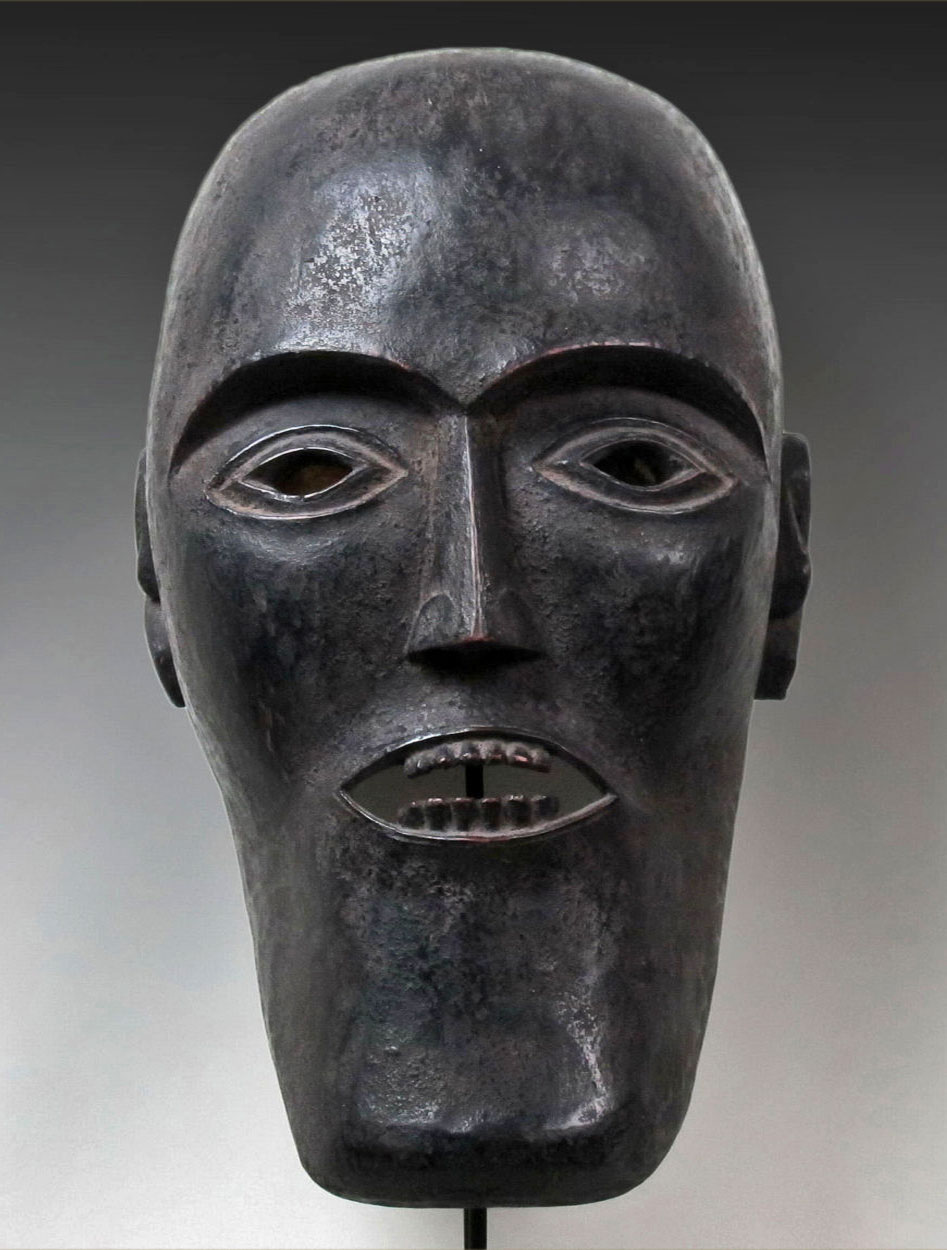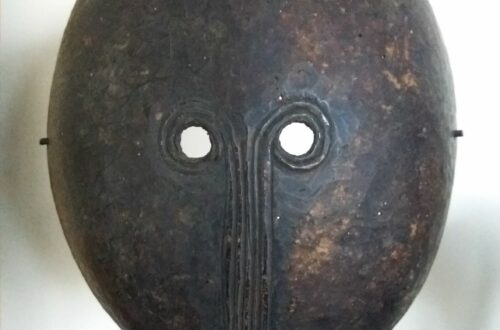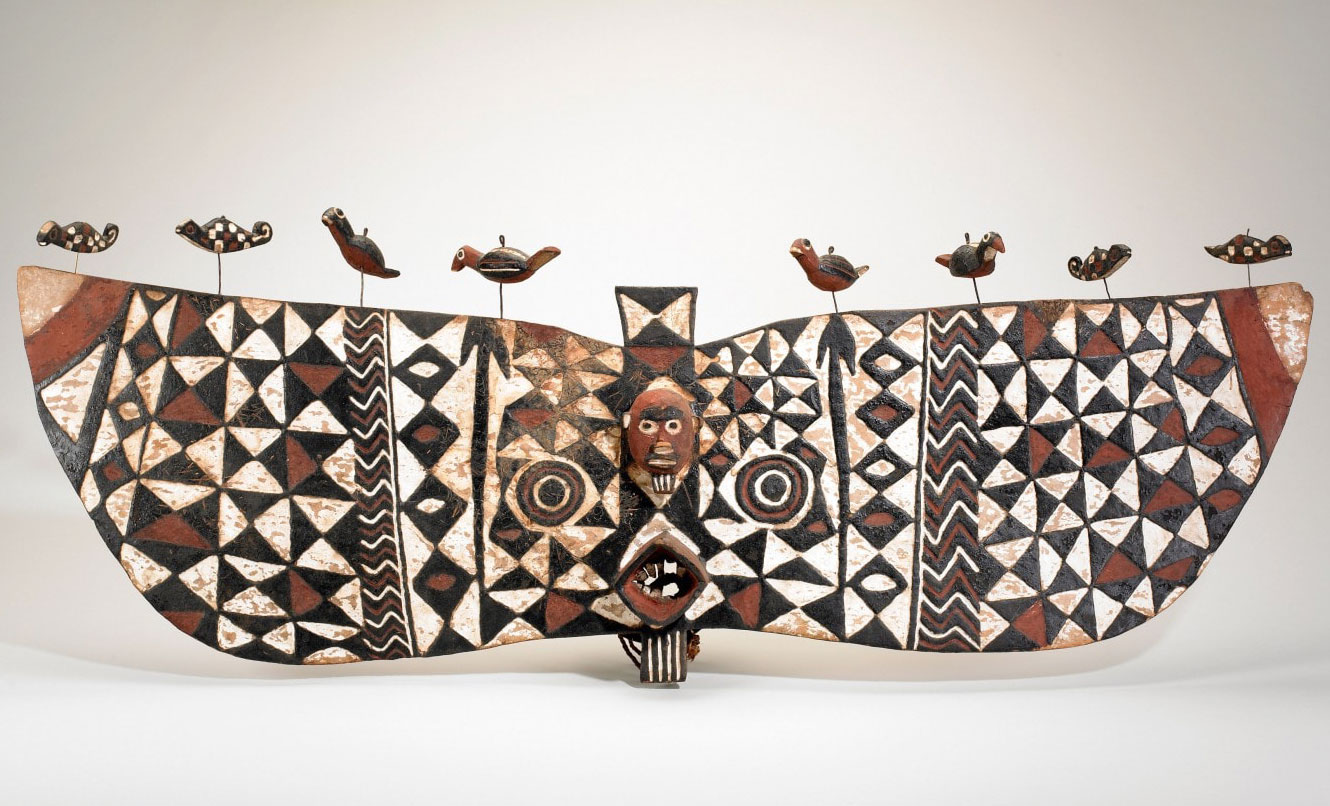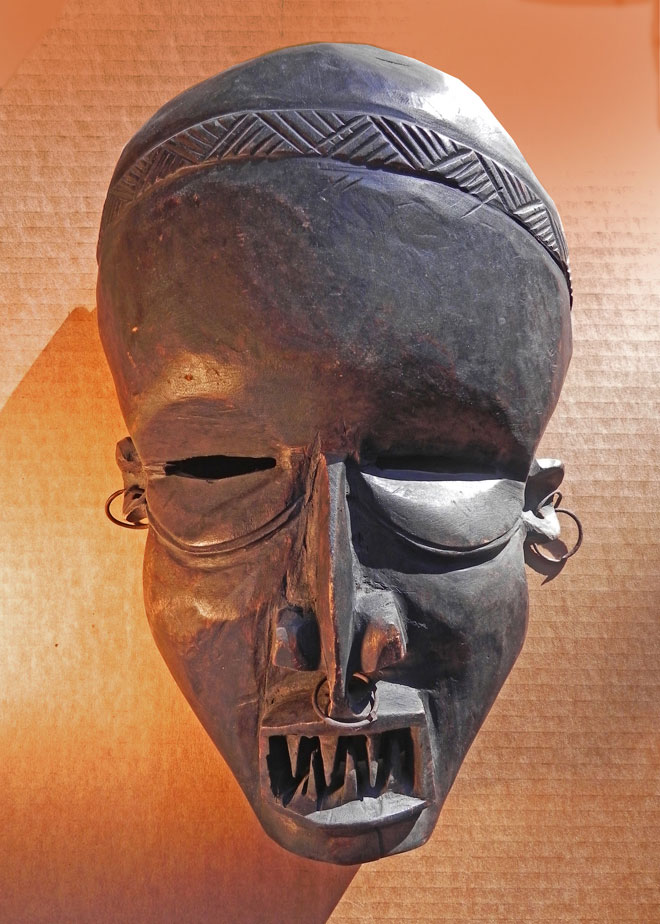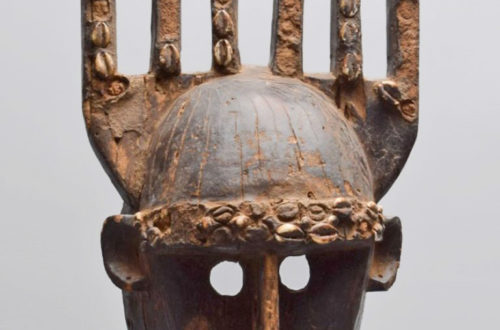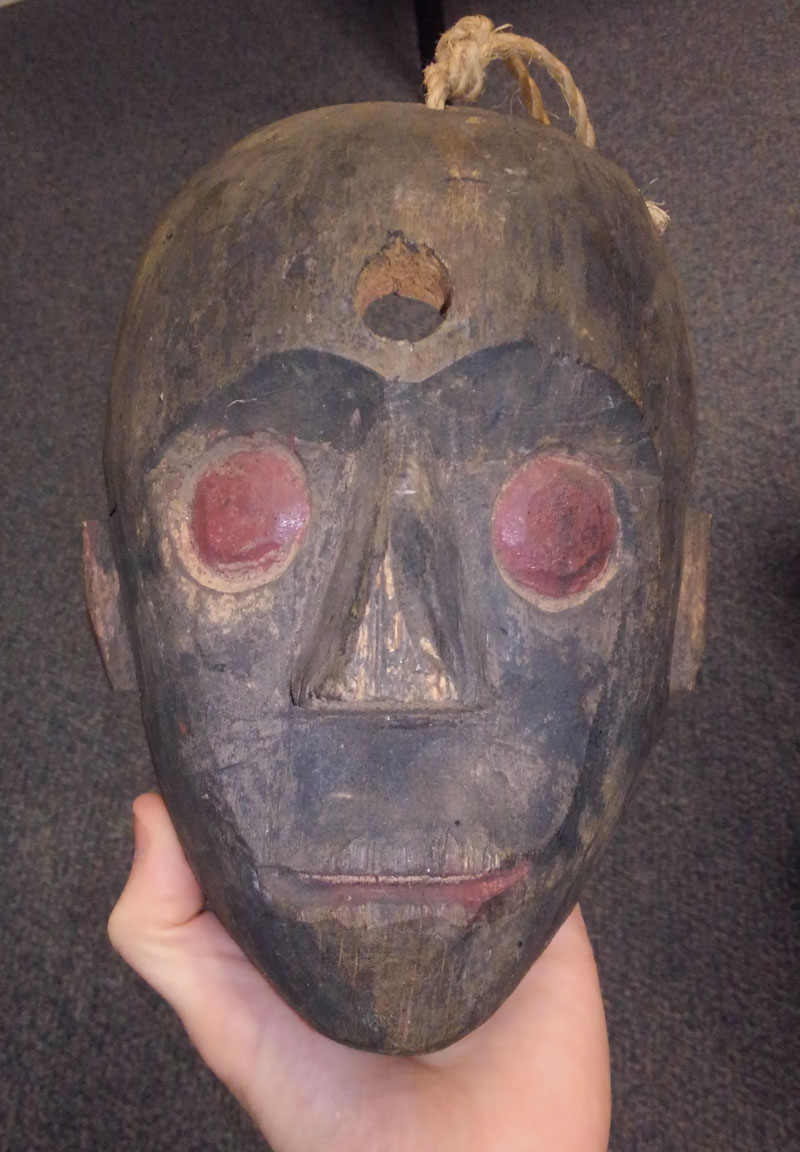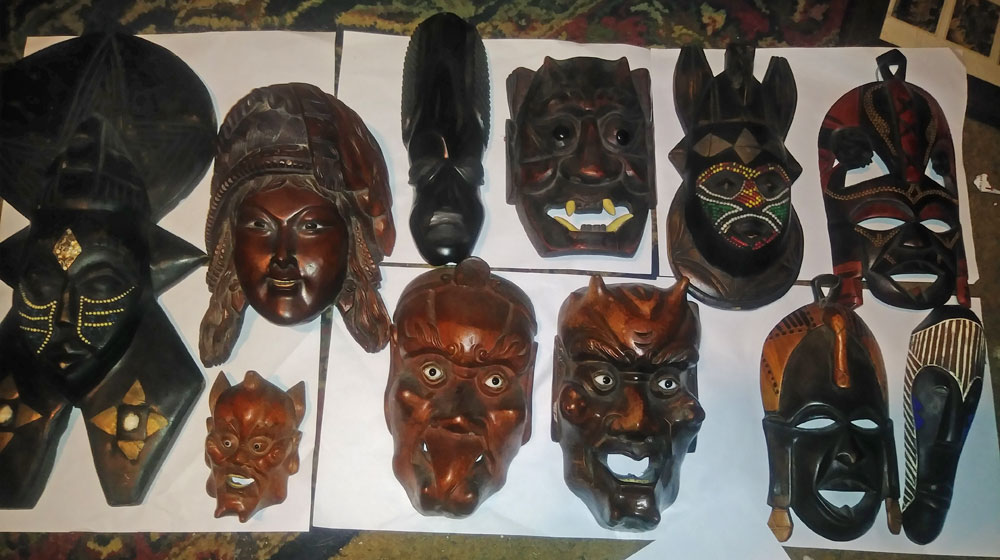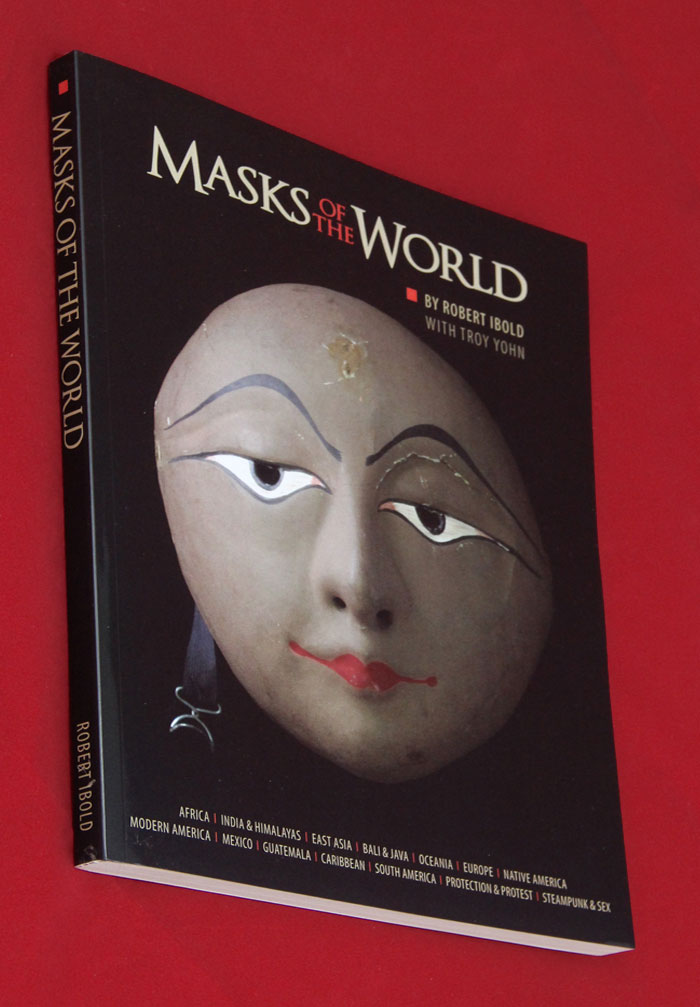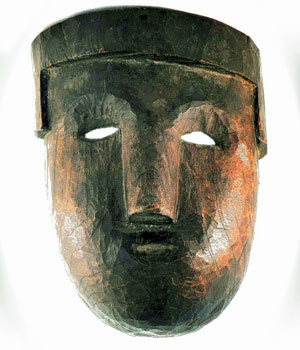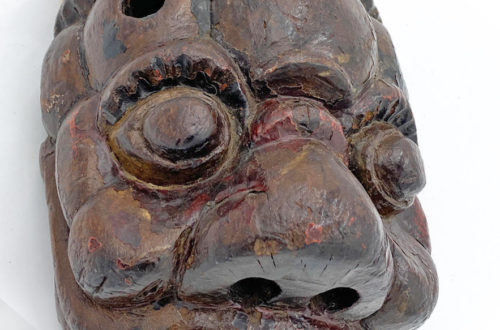This mask is gorgeous. It was made for someone important (and well-to-do) to wear at a big ceremony. In my notes I wrote it was made by the famous mask maker, Victoriano Salgado, who is from Uruapan, Michoacan. One of my collector friends sent the photo to me several years ago. The wooden part of the mask would be adult human in size.
-
-
Another exciting mystery mask
Q: This one is stumping me in a big way. The nose and nose decoration looks like they are made of bone. The hide is slightly hairy on the inside. Judging by the condition of the leather, which is rock hard, it is probably at least 30 or 40 years old, but I have no clue where it is from. Given that the other masks in the collection are mostly from Mexico and Nepal, my instinct is to say Nepal, but I’ve never seen a Nepalese mask even remotely similar. Any ideas? Aaron, 1250 A: My instincts say Mexico, somewhere in the Northwest between Sonora and Jalisco. Also, I vaguely…
-
Boldly Cubist: An Early Elephant Mask
From the Igbo Izzi of Nigeria, hardwood; kaolin and pigment stain (layers from reapplications from multiple uses), encrustation from shrine applications and applied offerings. Dimensions: 20.5″ (h) x 12″ (w) / 52.07 cm (h) x 30.48 cm (w), age: turn of 20th century. This beautifully expressive elephant spirit mask was danced as a symbol of strength and clarity for the Igbo community. It has been centuries since elephants roamed Nigeria, and this type of abstracted image of an elephant is the result of historical verbal description rather than artistic license. From a recent ad of Berz Gallery of African Art. The influence of African traditional art on 19th Century European…
-
Mukaha mask from NE India
This mask was made by an average person to save money, or make a little extra. Despite its crudeness, I like it a lot. I’m also happy to see, for the first time, a mask from Majuli, Assam. Even though masquerade is quite important in the world’s second largest country, I don’t get to see the masks or costumes very often. Nor do I know of any good book about them. If you know of such a book, please share the title and author’s name with us. Indian masks used by professional dancers can be fabulous. From Neroutes.com, Aug 19, 2016.
-
Holy Week mask from NW Mexico
Q: I recently won an auction with about 20 masks, most of which were tourist junk, but a few of which are interesting. Most seem to be from Mexico or Nepal. In this group are several genuine mysteries that have stumped me, and I was hoping for your help with them. Here is the first one. It’s quite old, probably dating to the 1970s, judging by the extremely dry leather of the pelt. It looks to me like coyote pelt, which suggests it could be a fariseo mask from the Yaqui or Mayo people, but I’ve never seen one looking quite like this. What’s your take on it? Aaron, 1247…
-
Unusual Mexican decorative mask
Q: I have been trying to ID this mask for some time. It was given to me back in the 70’s. So far, I have been told it could be a pre-revolution Chinese mask, an ancient feng shui and a possibleTibetian. Could I please draw on your expertise to finally confirm the mask’s origin. It is 13 inches long and 17 inches wide across the wing tips, with the face being 7 inches wide. Pete, 1246 A: I’ve never seen this particular character before, but I do recognize it as a Mexican decorative– the only form of tourist mask I feel is good enough to interest collectors. These artistic carvings…
-
A Mystery Mask
Q: I emailed you yesterday about a mask I had bought which appeared to be partially covered in gold foil. Just to say that I took it to a jeweler today and he confirmed it is indeed gold! I bought the mask together with a sword which may or may not be from the same tribe. The sword was made by the Fang tribe who live in Gabon and Cameroon. George, 1245 A: I can’t identify this mask. Based on the little you have told me, I would guess it is West African. Then there is the fact it does not look like a made-for-the-market fake. Let’s hope that some…
-
Modern Maori woman’s chin tattoo
When New Zealand was colonized in the 1800s, the ancient Māori practice of moko kauae—or sacred female facial tattooing—began to fade away. Now the art form is having a resurgence. Here’s what it means to stamp your identity on your face. For New Zealand Māori women, the moko kauae, or traditional female chin tattoo, is considered a physical manifestation of their true identity. It is believed every Māori woman wears a moko on the inside, close to their heart; when they are ready, the tattoo artist simply brings it out to the surface. Last month, Nanaia Mahuta became the first member of parliament in the world to wear a moko…
-
Huge butterfly mask from the Bwa
I’m sure you have seen these great horizontal masks inspired by butterflies and hawks. They are made for important ceremonies, but of course we collectors enjoy displaying them over a door or some other wide space. This is the best one I’ve ever seen. It is currently being displayed at the National Museum of African Art which is part of the Smithsonian Institution. This museum is easy to miss in the middle of Washington because it is mostly underground and appears to be just a very small building in the mall area. This fabulous mask was made in the 20th century by the Bwa people in Burkina Fasso. A+
-
Decor items vs. artifacts
Q: I have 11 tribal masks that I would like to sell. Some have beads on their faces and others have teeth. They are all different and pretty cool. However I have no clue about what tribe made them. Please let me know if interested and I will send photos. Connie, 1242 A: I’m breaking several of my own rules and publishing the photo of your 11 wood carvings. They were made to look like tribal masks and to be sold as souvenirs or as wall art. Tourist items like these can be fine for decoration, but real masks– the ones that are actually worn in native cultures– are sometimes…
